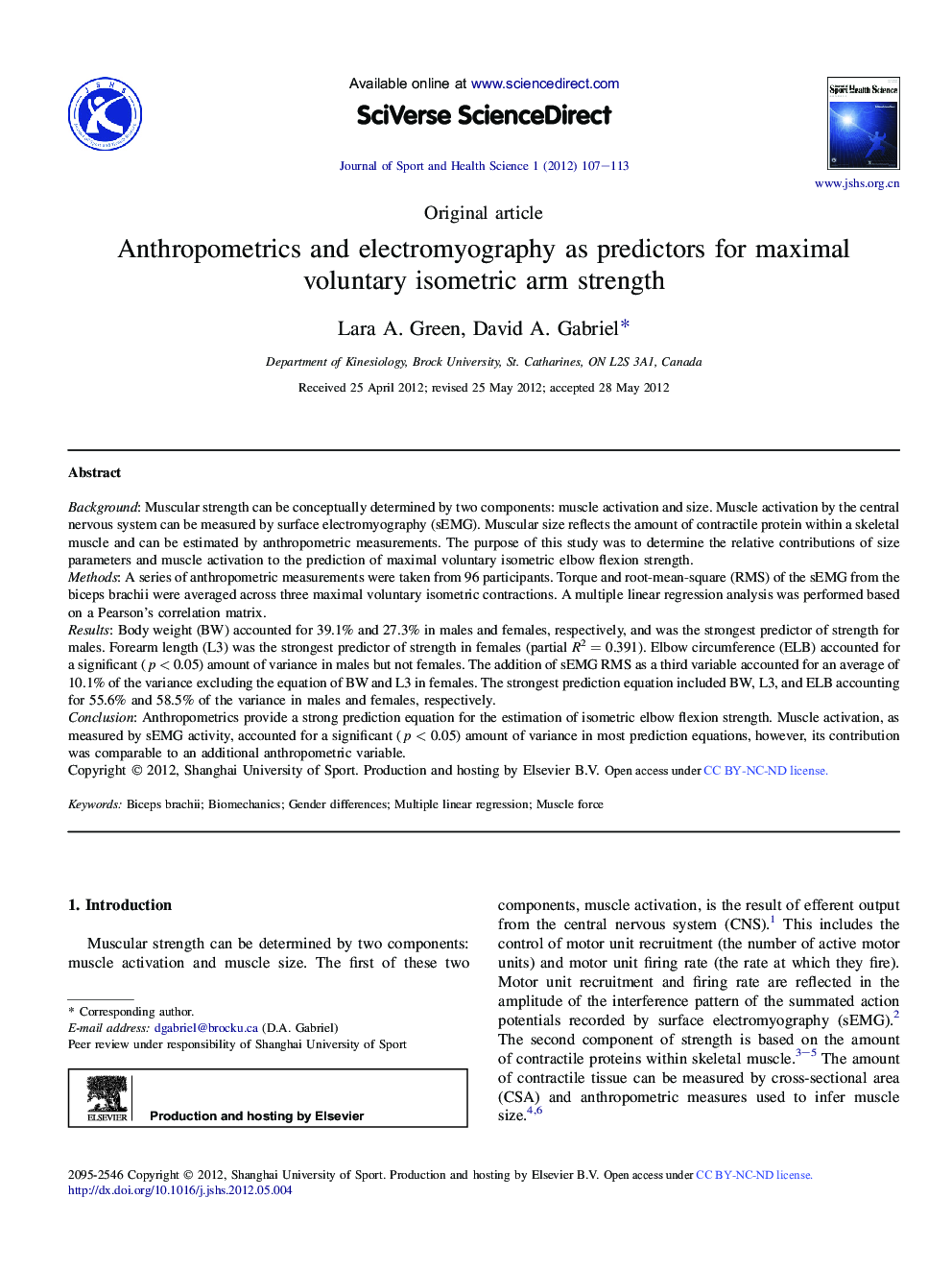| کد مقاله | کد نشریه | سال انتشار | مقاله انگلیسی | نسخه تمام متن |
|---|---|---|---|---|
| 1084309 | 951271 | 2012 | 7 صفحه PDF | دانلود رایگان |

BackgroundMuscular strength can be conceptually determined by two components: muscle activation and size. Muscle activation by the central nervous system can be measured by surface electromyography (sEMG). Muscular size reflects the amount of contractile protein within a skeletal muscle and can be estimated by anthropometric measurements. The purpose of this study was to determine the relative contributions of size parameters and muscle activation to the prediction of maximal voluntary isometric elbow flexion strength.MethodsA series of anthropometric measurements were taken from 96 participants. Torque and root-mean-square (RMS) of the sEMG from the biceps brachii were averaged across three maximal voluntary isometric contractions. A multiple linear regression analysis was performed based on a Pearson's correlation matrix.ResultsBody weight (BW) accounted for 39.1% and 27.3% in males and females, respectively, and was the strongest predictor of strength for males. Forearm length (L3) was the strongest predictor of strength in females (partial R2 = 0.391). Elbow circumference (ELB) accounted for a significant (p < 0.05) amount of variance in males but not females. The addition of sEMG RMS as a third variable accounted for an average of 10.1% of the variance excluding the equation of BW and L3 in females. The strongest prediction equation included BW, L3, and ELB accounting for 55.6% and 58.5% of the variance in males and females, respectively.ConclusionAnthropometrics provide a strong prediction equation for the estimation of isometric elbow flexion strength. Muscle activation, as measured by sEMG activity, accounted for a significant (p < 0.05) amount of variance in most prediction equations, however, its contribution was comparable to an additional anthropometric variable.
Journal: Journal of Sport and Health Science - Volume 1, Issue 2, September 2012, Pages 107–113